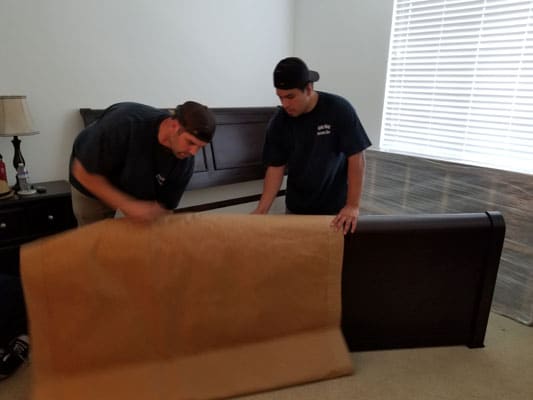Moving day often conjures images of bubble wrap, cardboard boxes, and the chaotic dance of maneuvering oversized couches through too-small doorways. But while packing dishes and clothes might seem straightforward, moving furniture without damage is a whole different challenge. Without proper preparation and technique, your favorite dresser could end up with chipped edges, your dining table with scratched legs, or your back with a painful strain.
If you’re preparing for a move, learning how to protect your furniture is essential—whether you’re downsizing across town or relocating across the state. Here’s how to do it right, and why many homeowners end up trusting professional movers to handle the heavy lifting.
Assess Before You Lift
Before you touch a single item, assess the layout of your current space and your new one. Take measurements of hallways, staircases, door frames, and elevators. Create a plan for how each piece of furniture will exit and enter, so you’re not stuck mid-move with a sofa that won’t clear the landing.
Knowing your limits is part of safe moving, especially when dealing with oversized or awkwardly shaped pieces. Check out this guide to proper lifting technique to protect your body and back during moves.
Dismantle What You Can
Large furniture pieces should be disassembled when possible. Remove legs from tables, detach headboards, take drawers out of dressers, and unbolt cushions from recliners. Label and bag the hardware for each piece separately—tape the bags directly to the item they belong to so nothing gets lost in the chaos.
Smaller parts and hardware may not seem important in the moment, but misplacing just one bolt can delay your setup for days. As explained by Family Handyman, labeling is one of the smartest ways to stay organized during a big move.
Protect Surfaces With the Right Materials
It’s not just about wrapping items; it’s about wrapping them properly. Use thick moving blankets, foam padding, and stretch wrap to shield surfaces from scratches and gouges. For wooden furniture, avoid plastic directly on the surface as it can trap moisture and cause warping.
Corner protectors are especially helpful for bookshelves, dressers, and dining tables. Wrap mirrors and glass items in bubble wrap, then sandwich them between cardboard sheets. Reinforce edges with foam to minimize shock during transit.
Avoid Dragging
Dragging furniture may seem easier, but it’s one of the fastest ways to damage both your furniture and your floors. Always lift when possible. Use sliders or lifting straps for heavy items, and protect floors with cardboard or moving blankets. If stairs are involved, have a solid plan and at least two people available to help manage the weight and angle.
Trying to muscle a piece alone without the right support is how accidents and injuries happen.
Load With Care
Furniture should be loaded onto the moving truck in a way that maximizes space and stability. Heavier items should go in first and be secured with straps to prevent shifting in transit. Delicate pieces should be placed upright and protected by soft padding on all sides. Avoid stacking furniture unless it’s specifically designed to nest.
Professional movers know how to optimize truck space without compromising safety. Without that experience, it’s easy to load a truck poorly and end up with broken legs, ripped fabric, or shifting that causes damage in transit.
Watch the Weather
It might seem like a minor detail, but moisture and temperature changes can seriously affect wood and fabric furniture. Moving on a rainy day without proper weatherproofing can cause irreversible damage. Always use waterproof coverings when necessary, and if possible, avoid moving wood or antique furniture in overly humid or freezing conditions.
The Case for Calling in the Experts
While it’s technically possible to move furniture on your own, there’s a big difference between can and should. Hiring professionals doesn’t just save your furniture—it saves your time, your back, and your nerves. A trained team knows how to protect delicate wood, handle narrow corners, and secure your belongings with precision.
They’ll come equipped with the right tools, from moving dollies and lifting straps to heavy-duty wraps and reinforced trucks. Most importantly, they’re insured, so if something does go wrong, you’re protected—something that’s rarely the case when relying on friends or renting a van yourself.
Right Way Movers – Professional Furniture Moving in California
Furniture isn’t just furniture. It’s the dining table where memories were made, the couch where you collapsed after long days, and the antique chest passed down through generations. At Right Way Movers, we understand that. Our expert team in California is trained to move your belongings with care, strategy, and respect, making sure everything arrives in perfect condition. When it comes to moving your home safely and efficiently, you don’t need to go it alone.

